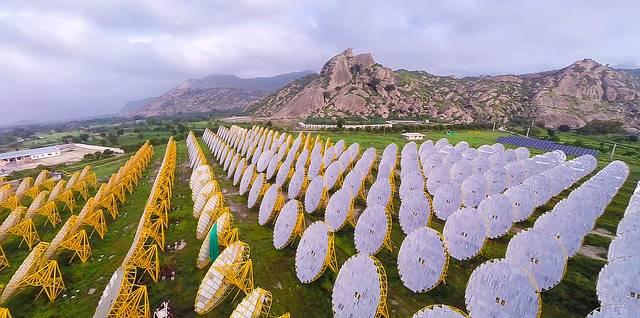
By Brooke Nally
2017 looks like it might be the best year ever for solar adoption. Initiatives are set to pick up speed around the world, including in China. Of all the nations with big plans, though, India just might have the biggest.
India expects to commission 7.7 gigawatts of utility-scale solar projects this year, a 90 percent increase from 2016. These will join 1.1 GW of rooftop solar capacity — a 75 percent increase over 2016 — for a total of nearly 9 GW of capacity added this year alone. This will put the country’s total installed solar capacity at 18 GW and help it break into the top three countries in the world for installed solar capacity.
India’s long-term goals are ambitious: The country wants to get at least 175 GW of power from clean sources by 2022, 100 GW of which will be solar. That’s enough to power 60 million homes. And by 2030, India wants to have 40 percent of all power coming from non–fossil fuels.
Why India?
With a population approaching 1.3 billion, the country needs to find a way to supply its people with affordable and sustainable energy. Solar fits the bill. Panels are cheaper than ever — 30 percent less than retail energy in many places — and that trend is expected to continue.
Storage is also becoming more affordable: Costs of lithium-ion batteries, the industry standard, are expected to fall by as much as 30 percent per year over the next few years.
These dropping costs, combined with the increasing awareness that traditional fuel sources are not sustainable long term, make solar electricity systems one of the most attractive options for both residential and large-scale deployment. Inderpreet Wadhwa, CEO of Azure Power, told the Huffington Post he believes solar will be the cheapest form of energy in India within a few years.
India already has a large solar infrastructure and boasts the world’s largest solar power plant. The sprawling facility in Kamuthi, Tamil Nadu, covers an area of roughly 3.9 square miles. With a capacity of nearly 650 megawatts, it sits well above the previous record holder — California’s 550 MW Topaz Solar Farm. To put that output in perspective, it’s enough to power roughly 150,000 homes.
That's not India’s only forward-thinking initiative
The impact this effort will have on India can’t be overstated. Hitting that 100 GW target is expected to create over a million jobs in the country. That’s an investment in and of itself, though. To get all these workers up to speed, the country is taking a novel approach — affordable and accessible online courses.
For less than US$9, anyone can enroll in these solar energy courses. They cover a wide range of solar-related topics, including photovoltaic system basics, designing solar electricity systems, commissioning solar power plants, and operating and maintaining a plant. Those who successfully complete the program will receive a certificate from India’s Ministry of New and Renewable Energy, which can then aid them in getting a job in the industry.
India also wants to expand Internet access for its population. Of the 1.3 billion people living there, only 19 percent have Internet access.
To remedy this, the government partnered with Google to set up free public Wi-Fi access at train stations around the country. The plan will include as many as 400 stations across India over the next few years, helping millions of people get online.
This isn’t the snail-paced access you might expect, either. Google is using Indian company RailTel’s fiber-optic lines to provide the infrastructure, so speeds could reach 1 gigabit per second. To give you an idea of how advanced this gigabit Internet is, it’s the difference between waiting 10 minutes or waiting five seconds.
Because of its population, India is in a unique position to impact an enormous number of lives with these plans. And because of the scale required, it may help other, smaller nations feel more confident taking steps towards sustainable futures as well.
Image credit: Flickr/Brahma Kumaris
Based out of Salt Lake City, Utah, Brooke is the content coordinator for SolarPowerAuthority. She is a solar expert with a love for all things eco, including smart green design, hydroponic grow systems, green business initiatives, and sustainable living off the grid. You can contact her via Twitter; @brookenally.
TriplePundit has published articles from over 1000 contributors. If you'd like to be a guest author, please get in touch!














